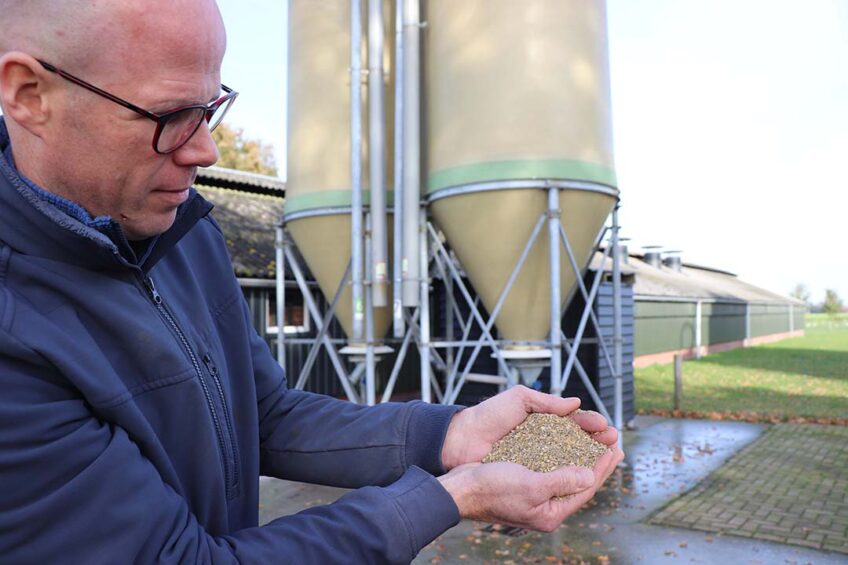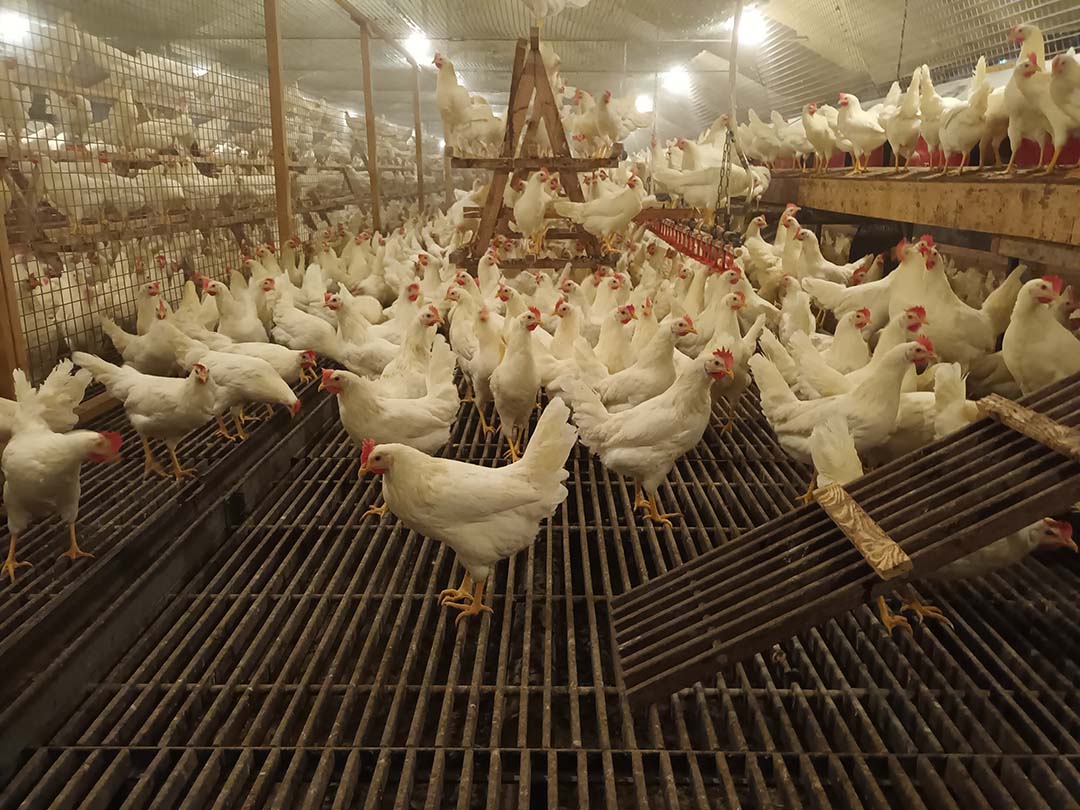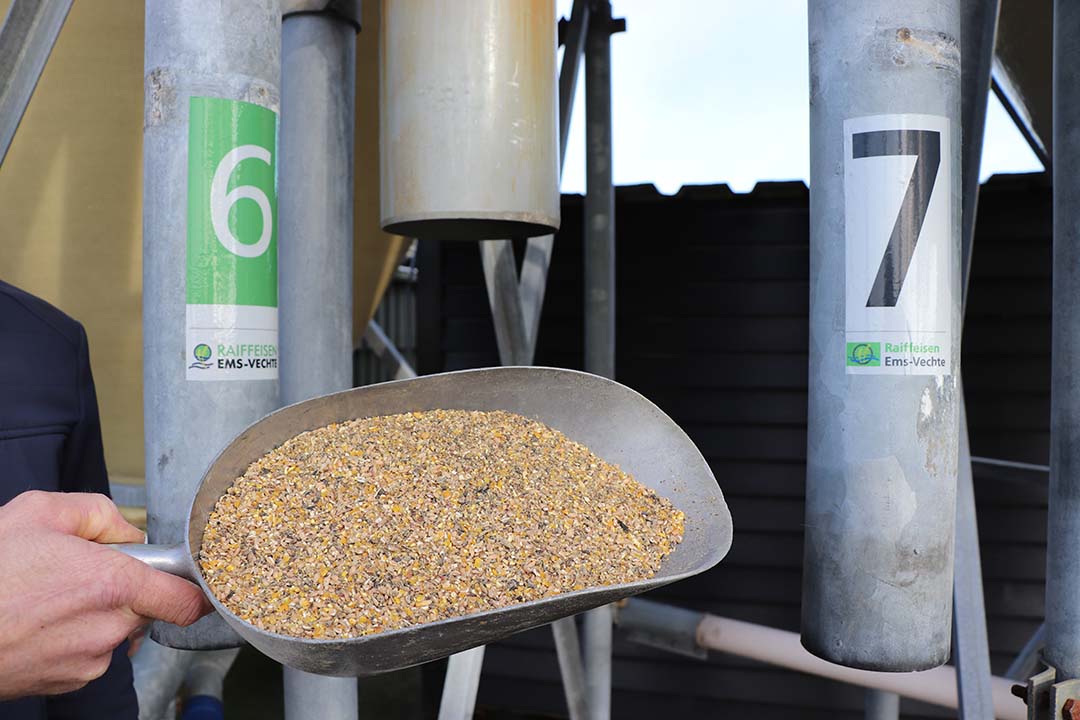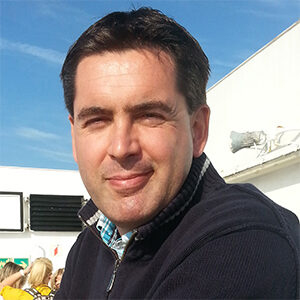Lower footprint feeding European soy to poultry

Van den Ham Animal Nutrition Research has tested many feed compounds in the past. Recently, the company explored the effects of soy substitutes. Can laying hens do without this high-quality protein source? A trial with European soy instead of South American soy will begin soon.
Aart and Jasmijn van den Ham have 24,000 organic laying hens and another house with 3,600 research hens. The house with 3,600 trial birds falls under the Van den Ham Animal Nutrition Research unit. The farm owners have a history of advancing poultry nutrition. Back in the day, Aart’s parents already had 2 small test barns and worked with the Dutch compound feed company, ABZ De Samenwerking.
Aart and Jasmijn started their trials for ABZ in September 2013. The trials are carried out on a flock basis and usually involve feeding in combination with genetics trials. Being an organic producer, they already had Hyline Silver hens from Agromix in production. Aart: “So we were already in contact with Agromix and at one point they also asked if they could set up a test flock of laying hens with us to look at genetic potential.”
A soy-free feed trial
At the time when Aart’s father still had his test house, experiments were carried out with 2 flocks of laying hens side by side. One flock was fed compound feed with soy from South America and the other flock was given soy-free compound feed. The tests carried out at Van den Ham Animal Nutrition Research always involve 2 flocks with 1,800 test hens in each, so 3,600 laying hens in total. “The question was whether laying hens can do without these high-quality proteins. Soy has one of the highest protein utilisation rates of all types of raw materials available for compound feed,” said Aart.

During the research, the hen’s plumage, body condition and so on, remained good. “Over a longer period of time, of course, because our flocks usually stay in production for more than 80 weeks, sometimes the body condition of a flock of hens suddenly deteriorates when soy is removed, but that was not the case now. The difference between the research groups remained minimal. The flock that was fed soy-free was given sunflower flakes as a protein substitute instead of South American soy.”
Hy-Line W-80
The Hy-Line W-80 was placed in 2016-2017, with one research group receiving a more fortified type of food, called Optima. The other research group was served a less enriched, lower protein type of feed, called Prima. Aart: “This trial was commissioned by the Dutch compound feed company ForFarmers/Reudink. The most important question in this research was: is there a bottom line financial difference between the 2 feed types after 80 weeks? Given that the Hy-Line W-80 is currently the most commonly used hen worldwide, this was a really valuable test. On top of which I am fond of this hen.”
Aart mentions the technical results from that time and they are indeed impressive. The number of eggs per hen placed is 409 eggs at 86 weeks of age. The cumulative feed conversion rate was 2.13 and the mortality rate averaged at about 6%. But why doesn’t the layer farmer who also keeps commercial organic laying hens not use this breed of hen himself? “In itself, that would be possible but there has been so little experience with these hens so far in the organic sector that I do not yet dare use the Hy-Line W-80 as an organic hen. I think the risk is still too great,” he says.
Better hatching egg utilisation
Aart was also awarded a trial that interested him very much in November 2020, one with the Nick Chick H&N from Agromix. This test involved laying hens that had been hatched from hatching eggs that are normally not hatched because they are too small. Hatching eggs below a certain weight are not hatched at hatcheries worldwide. The trial lasted 2 years and ran from hatching egg to depletion of the flock. “The remarkable conclusion was that under exactly the same conditions, there were no significant differences between the research groups. This study has resulted in much better hatching egg utilisation and fewer hatching eggs being discarded unnecessarily,” says Aart.

One of the organic laying hen species that Aart uses himself is the Nick Chick: “The reason for this is because I simply think the LSL performs less well. But the tide is starting to turn because I see that the newer type LSL and the new hen Chrystel Nick are quite similar.”
He thinks the Nick Chick is a bit better than the Chrystel Nick in terms of feathering, but he thinks that the Chrystel Nick is better in terms of egg weight and laying persistence. Van den Ham Animal Nutrition Research started an interesting trial in April 2022 with a flock of 1,800 Hy-Line W-80s and 1,800 Chrystel Nick hens (the successor to the Nick Chick). Van den Ham considered them both to be top flocks. “They both quickly reached a 98% laying percentage and stubbornly remained there. However, in October 2022, an avian influenza outbreak threw a spanner in the works. Really a shame. The farm stood empty for 6 months.”
European vs South American soy
Fortunately, a new flock was placed on 21 March 2023, in association with Agromix, and immediately divided into 2 equal flocks of Chrystel Nick hens. The animal feed researcher says that there will probably be another soy trial. This time with ‘Danube soy’, so soy from the area of the European Danube river. Aart: “This European soy has a much lower footprint than soy from South America, for example. And you no longer contribute to the deforestation of rainforests.”
There is a chance that the quality of the Danube soy is slightly less than the soy from South America. But whether this also has an effect on the hens and eggs is being tested. “They may do just as well on the Danube soy as on the South American soy,” expects Aart. From January 2024, 2 flocks are destined for the research: One with soy from the Danube region and one with soy from South America. The hen being used for this test is the Chrystel Nick.
Aart collects a lot of data with each test. “This includes food and water consumption. I also have automatic animal weighing and all eggs are weighed daily (the daily production) on a digital scale. As for the cumulative feed conversion rate, I calculate it on a weekly basis because that is the most accurate. I am looking forward to the results.”
 Beheer
Beheer











 WP Admin
WP Admin  Bewerk bericht
Bewerk bericht